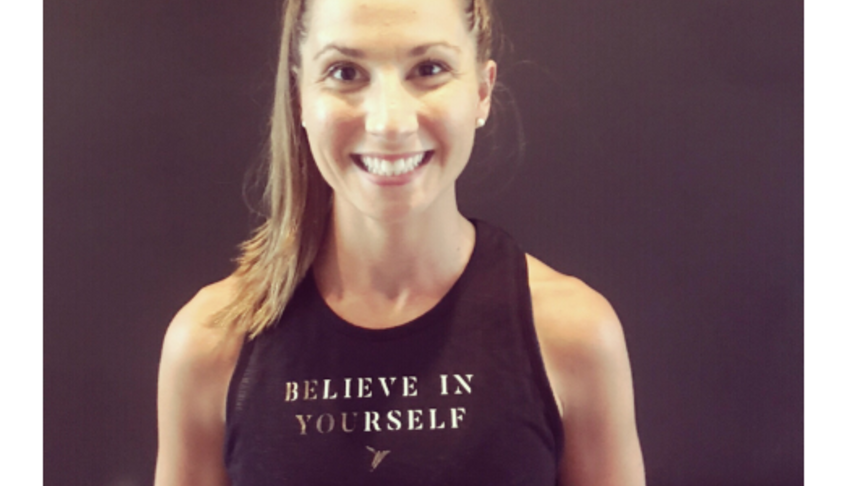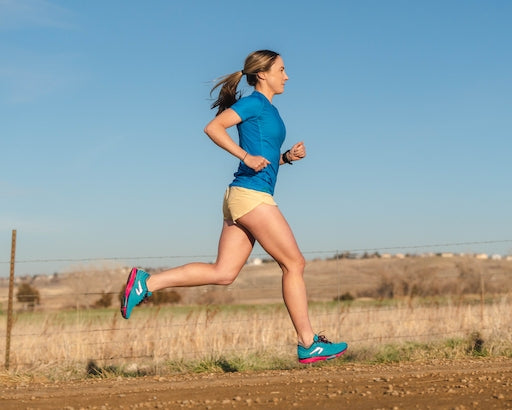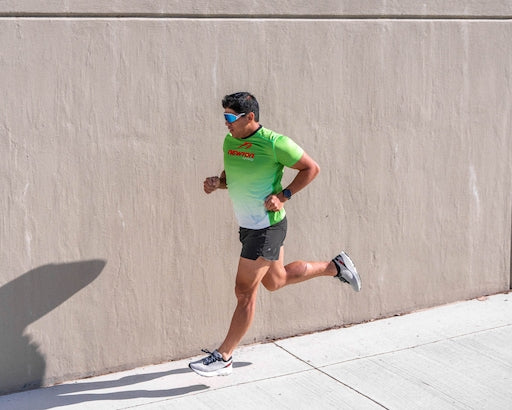
6 Common Running Injury Exercise Tips
13 September 2019
By: Chelsea Oswald; Doctor of Physical Therapy
If you come across a group of runners, chances are it takes very little time for the discussion of running related injuries to come up in conversation. No wonder why, statistics show that 79% of runners get injured per year. Take a look at 10 people at your next race—8 of those people have or will be injured that year! While there are many reasons runner get injured, check out the following tips for common running related injuries!
1. Plantar fasciitis: This is injury is like no other—stubborn, stabbing, and frustrating! While stretching, heel gel inserts, and massage can help symptoms, the most recent research shows high load strength training consisting of heel raises with your toes on a towel roll as the follow picture shows. Every heel raise should be performed for 3 seconds going up, 2 second hold at the top, followed by 3 seconds going down. Start with both legs, progress to single leg, followed by added a weight for increased load. Perform 3 sets of 12 repetitions. The key is a gradual increase in load; it is fine to feel 4/10 pain or less while performing the exercise but make sure the pain does not get worse the next 24 hours. 
2. Patellofemoral Pain Syndrome (PFPS): There are many names for this injury like anterior knee pain, runner’s knee, chondromalacia patella…it can also be mistaken for other common knee injuries! PFPS is pain from the tissue within or surrounding the joint between the knee cap and femur. The key to this injury is to offload initially by avoiding irritating activities such as squatting, lunging, and running specifically down hill. If the pain is severe, some runners may to need stop running for a few days to let things settle or do these activities in smaller amounts. The key is to then gradually reload the knee with standing exercises with knee flexion ranges of 0-45 degrees that target the quadriceps and hips. One of my favorites is the Hip Hinge 3 Way Tap. Standing with a slight bend in the knees, hinge at the hips by sticking your butt back as if to sit in a chair. With one leg stable, tap the opposite leg out to the side, back at an angle, and backwards. The injured leg is the one that is on the ground and not moving! Try not to let your knee move inwards; think about keeping it inline with your 2nd or 3rd toe!

3. Hamstring Tendinopathy: Literally a pain in the butt! Symptoms include a deep ache in the lower buttock on the sit bone (ischial tuberosity) that can radiate into the posterior thigh. This can mimic other issues such as an issue coming from the low back so when in doubt, get it checked out! If it is the hamstring tendon, you want to avoid activities that “compress” the tendon on the bone which are stretching, prolonged sitting, and running uphill. Instead, you can to gradually load the tendon in an uncompressed position as shown in the picture below. Try these Extended Bridge Holds. Perform 4x:45 second holds, 4x a day. These are definitely tough but super beneficial!
4. IT Band Syndrome: Known as the Iliotibial band, this is a thick band of fascia (think of the casing surrounding sausage; fascia surrounds muscles and is thicker in some areas like the IT band). This band runs from a muscle in your upper hip called your TFL (tensor fascia latae) to your outer knee. Contrary to what you may have been told, avoid the classical IT band stretches as research does not support that you can “stretch” this tissue. Instead, use your foam roll to loosen up the muscles that have connections to the IT band, specifically your lateral quadricep muscle, hamstring, and TFL muscle. Avoid foam rolling directly on the IT band as this can further exacerbate symptoms. And strengthen those hips with the following exercise: Bruegger’s Side Stepping! Stand on a long resistance band. Cross the band in front of the ankles, behind your knees, and in front of your hips. Take 15-20 steps one direction and come back facing the same way. Feel those glutes burn!

5. Achilles tendonitis/tendinopathy: Another common sore spot for runners that starts gradually and then becomes more frequent until it interferes with activities that are not just running… and then typically a runner will seek treatment! Just like the hamstring tendon, avoid anything that will “compress” the tendon so avoid performing calf stretches or running/walking up hill. Instead, perform calf raise holds, starting on both legs and gradually progressing to single legs. Perform 4x :45 seconds holds, 4x a day.
6. Stress Fractures: Typically a case of the “too’s”: too much, too soon, too often, too fast, with too little rest. Bone tends to respond to stress by strengthening but too much stress causes the tissue to break down. While there are no specific exercises to heal a stress fracture, resting from the irritating activity for 4-12 weeks is best to allow adequate healing. Seeking guidance from a health professional is best as they can help you stay active through appropriate cross training and begin strengthening weaker areas. Typically, swimming, cycling, aqua jogging, and short walks are good cross training methods. It is important to expose the bone to some weight bearing activities during cross training to stimulate healing so short walks are appropriate as long as pain does not increase. One common area that is weak in runners are our hips and core. Try the “Single Leg/Arm Paloff Press” to build strength and stability. The band will try and rotate you—don’t let it!

Running injuries can be complex and puzzling at times. While these are great starter exercises for these injuries, it is best to be evaluated by a health care professional to make sure you are treating the correct injury and to have a second set of eyes on you to return you to the road as quickly and safely as possible! I hope these exercises help and here’s to happy and healthy running! Feel free to email me at hallc@joint-surgeons.com with any injury/running related questions.
Physical Therapist, Marathoner, & Former NCAA DI All-American
Contact: hallc@joint-surgeons.com
Find her on Instagram for more!

